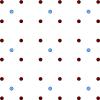当前位置:
X-MOL 学术
›
Phys. Rev. E
›
论文详情
Our official English website, www.x-mol.net, welcomes your
feedback! (Note: you will need to create a separate account there.)
Short-sighted deep learning.
Physical Review E ( IF 2.2 ) Pub Date : 2020-07-10 , DOI: 10.1103/physreve.102.013307 Ellen de Mello Koch 1 , Anita de Mello Koch 1 , Nicholas Kastanos 1 , Ling Cheng 1
Physical Review E ( IF 2.2 ) Pub Date : 2020-07-10 , DOI: 10.1103/physreve.102.013307 Ellen de Mello Koch 1 , Anita de Mello Koch 1 , Nicholas Kastanos 1 , Ling Cheng 1
Affiliation

|
A theory explaining how deep learning works is yet to be developed. Previous work suggests that deep learning performs a coarse graining, similar in spirit to the renormalization group (RG). This idea has been explored in the setting of a local (nearest-neighbor interactions) Ising spin lattice. We extend the discussion to the setting of a long-range spin lattice. Markov-chain Monte Carlo (MCMC) simulations determine both the critical temperature and scaling dimensions of the system. The model is used to train both a single restricted Boltzmann machine (RBM) network, as well as a stacked RBM network. Following earlier Ising model studies, the trained weights of a single-layer RBM network define a flow of lattice models. In contrast to results for nearest-neighbor Ising, the RBM flow for the long-ranged model does not converge to the correct values for the spin and energy scaling dimension. Further, correlation functions between visible and hidden nodes exhibit key differences between the stacked RBM and RG flows. The stacked RBM flow appears to move toward low temperatures, whereas the RG flow moves toward high temperature. This again differs from results obtained for nearest-neighbor Ising.
中文翻译:

近视深度学习。
解释深度学习如何工作的理论尚待发展。先前的工作表明,深度学习在精神上与粗化组(RG)相似。这个想法已经在局部(近邻相互作用)伊辛自旋晶格的设置中得到了探索。我们将讨论扩展到远程自旋晶格的设置。马尔可夫链蒙特卡洛(MCMC)模拟确定了系统的临界温度和缩放比例。该模型用于训练单个受限Boltzmann机器(RBM)网络以及堆叠式RBM网络。在早期的Ising模型研究之后,经过训练的单层RBM网络权重定义了晶格模型流。与最近邻居伊辛的结果相反,远程模型的RBM流量未收敛到自旋和能量缩放维数的正确值。此外,可见节点和隐藏节点之间的相关函数显示出堆叠的RBM和RG流之间的关键差异。堆叠的RBM流似乎向低温移动,而RG流向高温移动。这再次不同于最近邻居伊辛获得的结果。
更新日期:2020-07-10
中文翻译:

近视深度学习。
解释深度学习如何工作的理论尚待发展。先前的工作表明,深度学习在精神上与粗化组(RG)相似。这个想法已经在局部(近邻相互作用)伊辛自旋晶格的设置中得到了探索。我们将讨论扩展到远程自旋晶格的设置。马尔可夫链蒙特卡洛(MCMC)模拟确定了系统的临界温度和缩放比例。该模型用于训练单个受限Boltzmann机器(RBM)网络以及堆叠式RBM网络。在早期的Ising模型研究之后,经过训练的单层RBM网络权重定义了晶格模型流。与最近邻居伊辛的结果相反,远程模型的RBM流量未收敛到自旋和能量缩放维数的正确值。此外,可见节点和隐藏节点之间的相关函数显示出堆叠的RBM和RG流之间的关键差异。堆叠的RBM流似乎向低温移动,而RG流向高温移动。这再次不同于最近邻居伊辛获得的结果。











































 京公网安备 11010802027423号
京公网安备 11010802027423号